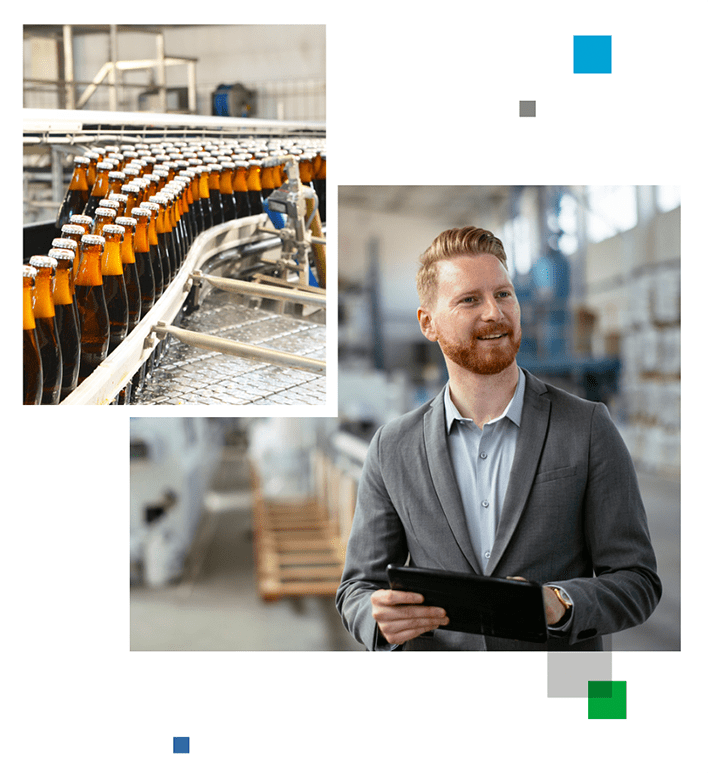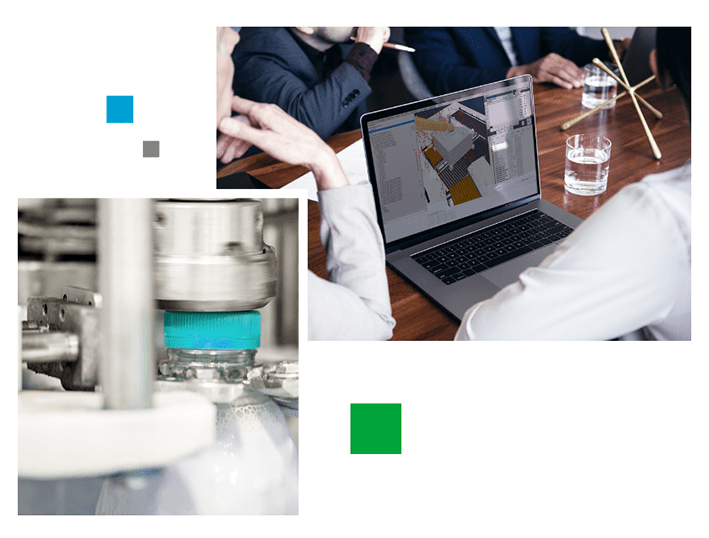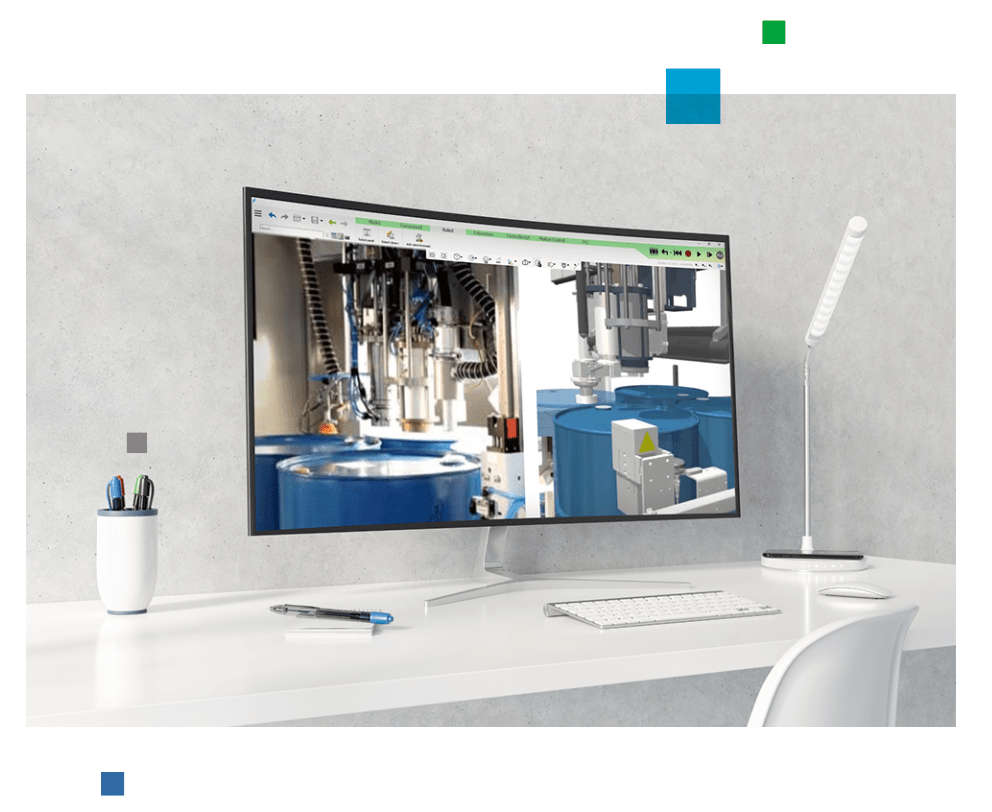Sustainability in Mechanical Engineering





What is sustainability, actually?
Sustainability is the interplay of different aspects that together are the key to a more efficient and more environmentally-friendly industry.
The selection of materials plays a crucial role in the efficient use of resources. Lighter and more resource-efficient materials can reduce energy consumption both during production and while a machine is in operation. Machines should also be designed to work efficiently and save energy; this includes the use of energy-efficient engines, waste heat recovery systems and optimized processes. The entire lifespan of a machine, from raw material sourcing through production to its operation and disposal, should be taken into consideration as early as the design phase. Machines should also be designed in such a way that the materials used in the machine are easily recyclable at the end of their service life. This promotes the circular economy and reduces the need for new raw materials. However, it is not only the selection of raw materials that is crucial, but also new technologies such as simulation software, which can improve the efficiency of machines, shorten development time and reduce the resources that are consumed; systems connected in the IIoT can help optimize energy use and improve maintenance, for instance.
Sustainability is not only something we do for the good the environment; it can also provide economic benefits by increasing efficiency, reducing costs and improving the marketability of products. Companies that integrate sustainable principles into their practices can not only minimize their environmental impact, but also remain competitive in the long term.
Learn more about sustainability in mechanical engineering for
your company – tackle the future.
Important information about CO2-neutral industry


Creating a carbon-neutral industry is crucial to limiting the effects of climate change and achieving global climate goals. Industry is often one of the largest contributors to greenhouse gas emissions. The challenge here is transforming industrial processes to become more sustainable. The transition to renewable energy plays a central role in making the industry carbon-neutral. The use of solar power, wind power and other renewable resources also contributes to minimizing industry’s environmental effects. Technologies such as virtual commissioning with iPhysics can also contribute to long-term resource savings as the entire machine can be virtually planned and tested in advance. It is essential that companies along the entire supply chain work together to establish common standards and practices to reduce carbon emissions. Raising public awareness and awareness among industry stakeholders of the importance of carbon neutrality is crucial to gaining widespread acceptance and implementation of these measures. Achieving a carbon-neutral industry requires a comprehensive, coordinated global effort and will likely require an integrated approach with technological, economic, political and social measures.
Learn more about iPhysics and its benefits for your company. Test it for free and without obligation with our live demo.



Circular economy: challenges for mechanical engineering

Introducing the circular economy into mechanical engineering comes with a number of challenges that must be overcome to increase efficiency and minimize environmental impact. Processes in machine design need to be rethought. Products must be designed so that their components can be easily disassembled, repaired and recycled. This may mean that traditional mechanical engineering design approaches need to be updated. To “close the loop,” it is important to recover high-quality materials from decommissioned machines. This means that advanced recycling technologies need to be used to ensure that the quality of recovered materials meets mechanical engineering requirements. Many machines contain different materials, and these must be accurately identified to make the recovery process efficient. Developing technologies to automatically identify and sort materials is a crucial challenge. Conversion to a circular economy may initially involve higher costs, especially if new technologies and processes are involved. Companies must therefore find ways to benefit from the long-term economic benefits of the circular economy.
Moving towards a circular economy in mechanical engineering requires a holistic approach and collaboration between various stakeholders including manufacturers, suppliers, governments and consumers. Despite the challenges, the circular economy offers companies the opportunity to save resources, minimize environmental impact, achieve economic goals and reap the benefits in the long-term. Artificial intelligence could offer a solution to this.
Learn more – our user reports give insight into how other companies have successfully put iPhysics to use.
Checklist: 6 points for introducing the circular economy in mechanical engineering
Introducing the circular economy in mechanical engineering to achieve sustainability goals requires careful planning and implementation. Here is a checklist of 6 points that can help:
- Product lifecycle analysis:
Examine the entire lifecycle of your products, from raw material sourcing to production through to disposal. Identify areas where your company could potentially increase efficiency and save resources. - Circular design
Integrate circular economy principles as early in the process as the design phase. Consider things such as recyclability and repairability when choosing materials.
- Resource-efficient production:
Optimize production processes to minimize resource consumption. Reduce waste and lower emissions by using efficient technologies and processes.
Implement circular economy models
Consider adopting business models such as product-as-a-service or remanufacturing, in which products are rented out or returned and recycled after use.
Supply chain management:
Work closely with suppliers to use sustainable materials and optimize the entire supply chain. Be sure that your suppliers also follow circular economy and sustainability principles.
Customer awareness and training:
Educate your customers about the benefits of the circular economy and how they can contribute by recycling, reusing or repairing products. Offer them assistance on how to properly dispose of and recycle your products.
Introducing the circular economy in mechanical engineering requires a comprehensive and integrated approach that includes not only products and solutions themselves, but also processes, supply chains and customers.
Make the upgrade. Let us assist you in your planning. Learn more in our free webinar.

Simulation as a best practice for sustainability
Using simulation technologies in mechanical engineering can be seen as a best practice for sustainability, as they help promote resource efficiency, energy savings and environmentally-friendly manufacturing processes.
By using simulation software such as iPhysics and virtual commissioning, engineers can test various options during development even before physical prototypes are made. This means more efficient designs and materials can be identified and evaluated, which can lead to lighter and more resource-efficient products. Simulations also allow companies to analyze and optimize manufacturing processes in terms of energy efficiency, which in turn can help reduce energy consumption and lessen environmental impact. In addition, simulations depict the entire lifecycle of a product, from its production through to its use and disposal, allowing engineers and designers to minimize environmental impact throughout the product’s entire lifecycle. By using simulation software, machines and systems can be commissioned and optimized virtually before they are physically assembled. This not only reduces the time needed for commissioning, but also minimizes waste and energy consumption during development. Potential problems and risks can be identified and fixed at an early stage, helping to avoid unnecessary production downtimes – which in turn saves resources.
While simulation technologies do require initial investment, the benefits in the form of resource savings, increased efficiency and reduced environmental impact can be significant in the long term. It is important that companies train their employees in these technologies and encourage innovation and sustainability to achieve the best results.
Make the switch today. With our training courses, we help your employees get ready for the metaverse – and the future.


Sustainable supply chains and supply chain management
Sustainable supply chains and supply chain management are crucial for companies that want to minimize their environmental and social impact and achieve long-term success. Here are some key things to keep in mind:
Companies should evaluate and select their suppliers carefully. It is not only costs that play a role, but environmental impact, ethical standards and social responsibility, as well. Integrating sustainability criteria into supplier evaluation measures encourages collaboration with partners who have similar values. Transparent supply chains ensure that the entire production process, from raw material extraction to the final product, can be traced. This not only boosts the company’s credibility, but also allows for greater control over potential environmental impacts. Using sustainable procurement practices involves purchasing products and services that are made with environmental and social factors in mind. For example, companies can choose products that are produced in an eco-friendly way, or that contain fairly traded raw materials. Working closely with suppliers is important to promote sustainable practices together. Sharing best practice and encouraging training can help suppliers understand and meet sustainability expectations. Transporting goods often requires significant energy and has a major environmental impact. Companies can optimize their logistics processes to minimize their energy use by choosing efficient transportation methods or switching to renewable energy, for example.



Promoting circular economy principles in the supply chain can help reduce waste and use resources more efficiently. This could include, for instance, reusing packaging materials or developing products with a longer lifecycle. Sustainable supply chains are not only good for the environment and society, they can also strengthen a company’s resilience by helping to minimize risks and allowing companies to reach customers who value sustainable products.
Get the most from your company. Optimize your processes with our simulation software, iPhysics, and reap all the benefits.
Talk to us to determine your savings potential.

